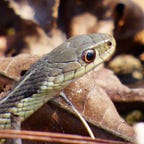Natural Hamilton in Pictures: Birds
Part Three of a series of photographic explorations of natural Hamilton, Ontario, Canada throughout 2013.
Always Something Different…
When you take a daily hiking routine, you begin to see the things that are different every time. Birds are one of those things: no two visits to a trail or natural space will yield the same composition of species or individual birds. They’re always on the move.
That’s likely what’s made them so interesting to log (using eBird) and later, photograph. Each time you see a new bird, you might not know if it’s the last opportunity to photograph that species in that location, or if it’ll be there again tomorrow, or next year.
Part three of Natural Hamilton in Pictures, Birds, I’ve assembled a collection of over 200 bird photos taken in or near Hamilton in 2013. This is by no means and exhaustive collection — I likely have a few thousand bird photos in 2013— but they are a variety of species. It’s also not a portfolio piece in any sense, so there are plenty of low quality photos too, as not all birds gave me a chance enough to get a good photo.
The Usual Suspects
Pictured: A Black-capped Chickadee, one of the most well-known bird species in Hamilton.
Male Red-winged Blackbirds actually arrive in flocks nearly a month before the females, in order to compete for territory. The females are much more shy, and are much less recognizable to most people.
Seasonal Vistors
Pictured: This Wood Thrush was one of many to nest at the Berry Tract north of Dundas.
Year-round Residents
Pictured: The Great Blue Heron can be found in Hamilton year-round, though is less common in the winter.
Just Passing Through
Pictured: The Black-throated Green Warbler is generally only seen during migration in Hamilton, though a handful may stay in heavily forested lots in some years.
Rarities and Oddities
Pictured: Late 2013 saw a massive Snowy Owl “irruption”. A bumper crop of Lemmings is theorized to have caused a much higher rate of survive in Snowy Owl chicks, causing a population explosion that manifested in a large migration that is seeing Snowy Owls all the way down to Florida. This one was seen at the Burlington Lift Bridge pier.
